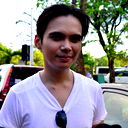10 AAPI inventors and innovators who changed the world with their contributions



By Bryan Ke
Asian American and Pacific Islander (AAPI) heritage month is a time for celebrating our diverse community and honoring those who have paved the way for future generations.
Check out these 10 AAPI inventors and innovators who helped improve the quality of everyone’s lives with their contributions.
John Tu and David Sun
They are the founders of Kingston Technology, which was first established in Orange County, California, in 1987. The company, which started by making memories for computers, is now a leading American manufacturing company that creates memory storage devices related to cameras and cell phones.
Peter Tsai

Taiwanese American scientist Peter Tsai is the inventor of the N95 mask, which is made of a protective material that can filter out 95% of submicron particles, including dust, haze, pollen, smoke and influenza viruses. The “N” in the mask’s name, meanwhile, stands for “non-resistant to oil.”
The mask proved helpful as this was the type of face mask that frontliners used during the early months of the COVID-19 pandemic.
Flossie Wong-Staal

Flossie Wong-Staal (1946-2020), a Chinese American virologist and molecular biologist, was a key player when acquired immunodeficiency syndrome (AIDS) became a global epidemic in the early 1980s.
Wong-Staal was the first scientist to successfully clone the human immunodeficiency virus (HIV), which researchers later found to be the cause of AIDS. They then used Wong-Staal’s findings to study the virus and later develop antibody tests. Her discovery and contribution helped other scientists to find ways to manage HIV.
Nainoa Thompson

A native Hawaiian navigator, Nainoa Thompson revived the once-forgotten traditional art of wayfinding using the sun, moon, stars, clouds and waves. A tradition that gradually died in the 14th century, Thompson was reportedly the first person ever to use the old method and develop it into his 1980 invention, the Star Compass, a conceptual direction system that does not need any navigational instruments.
Ajay Bhatt

Imagine what life would be like without the universal serial bus (USB), an interface that connects, transfers and powers hosts, to communicate with a computer. And we have Indian-born American computer architect Ajay Bhatt to thank for the technology.
Bhatt, who was an employee at Intel at the time, led a team of experts from seven different tech companies, such as Compaq, DEC, IBM, Intel, Nortel, Microsoft and NEC, to develop the USB.
The first version of the interface, USB 1.0, was first made available to the public in January 1996. Since then, many versions and types have been invented and released, like versions 2.0 through 4.0 and types A, B and C.
Min Chueh Chang
Considered one of the pioneers who helped revolutionize the birth control movement, Chinese American biologist Min Chueh Chang (1908-1991) was one of the scientists who developed the oral contraceptive pill.
Together with John Rock, founder of the Rock Reproductive Clinic, and Gregory G. Pincus, co-founder of Worcester Foundation for Experimental Biology, the three experts launched the first FDA-approved oral contraceptive pill Enovid in 1960.
Steve Chen and Jawed Karim

Taiwanese American internet entrepreneur Steve Chen and Jawed Karim, an American software engineer who is of German and Bangladeshi descent, are two of the three co-founders of YouTube.
Chen, Karim and Chad Hurley, who were all employees of PayPal at the time, came up with the idea of an online streaming website and launched the company that is now known as YouTube on Feb. 14, 2005. Karim shared the ever-so-famous “Me at the zoo” video on YouTube, the first video ever uploaded to the platform.
Ching Wan Tang

In 1987, Hong Kong American physical chemist Ching Wan Tang invented the organic light-emitting diode (OLED), a type of thinner and lighter visual panel that provides superior brightness and color. The first product that incorporated the technology was a car stereo display released by Pioneer in 1997.
Share this Article
Share this Article





